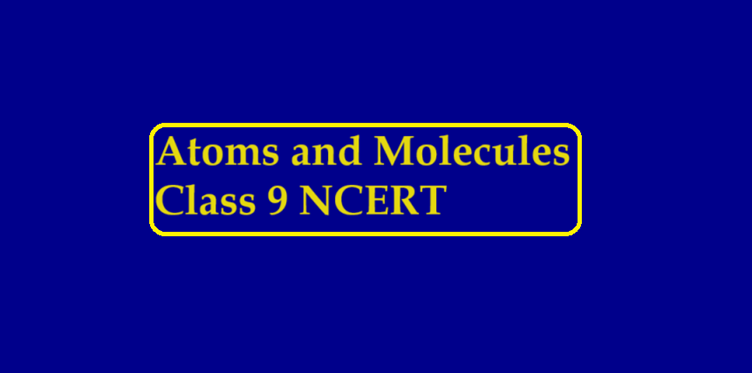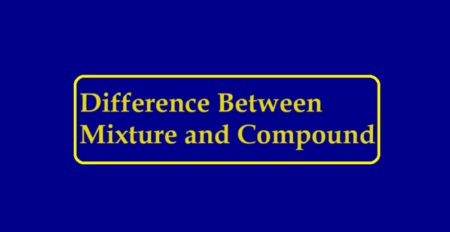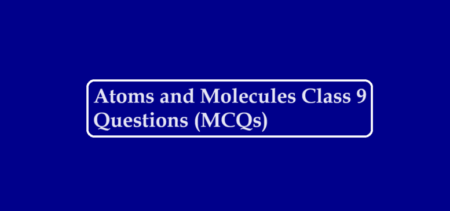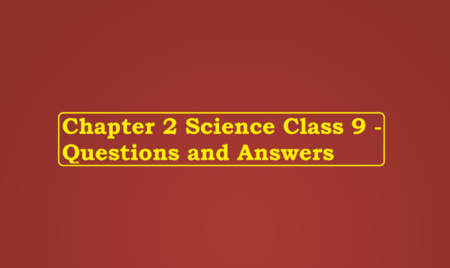Atoms and Molecules Class 9 NCERT
Atoms and Molecules Class 9 NCERT
Que 1. Give the unit to measure the size of an atom and give the size of the hydrogen atom.
Ans 1. The unit to measure the size of an atom is a nanometre, size of the hydrogen atom is 10-10m.
Que 2. What is IUPAC, give its one function?
Ans 2. IUPAC is the International Union for Pure and Applied Chemistry. It gives the names of elements.
Que 3. Give the Latin names for sodium, potassium, gold, and mercury.
Ans 3. Sodium → Natrium
Gold → Aurum
Potassium → Kalium
Mercury → Hydrargyrum
Que 4. What is the ratio by mass of combining elements in H2O, CO2, and NH3?
Ans 4. H2O ratio by mass of combining elements 2: 16 → 1: 8 (H: O)
CO2 ratio by mass of combining elements 12: 32 → 3: 08 (C: O)
NH3 ratio by mass of combining elements 14 : 3 → 14 : 3 (N: H)
Que 5. Define valency and give the valency for the following elements.
Ans 5. The combining capacity of an element is called its valency. Valency of the following elements:
Magnesium – 2
Aluminium – 3
Chlorine – 1
Copper – 2
Que 6. What is a polyatomic Ion? Give one example.
Ans 6. A group of atoms carrying a charge is known as a polyatomic ion. E.g., Ammonium – NH4+ Nitrate – N03–
Copper nitrate, calcium sulfate, and aluminIum hydroxide.
Que 7. Write down the formula for Copper nitrate, calcium sulfate, and aluminium hydroxide.
Ans 7. Chemical formula: Copper nitrate → Cu(NO3)2
Calcium sulphate → CaSO4
Aluminium hydroxide → Al(OH)3
Que 8. What is the formula unit mass? How is it different from molecular mass?
Ans 8. The formula unit mass of a substance is the sum of the atomic masses of all atoms in a formula unit of a compound. The constituent particles of formula unit mass are ions and the constituent particles of molecular mass are atoms.
Que 9. (a) How do atoms exist?
(b) What is atomicity?
(c) What are polyatomic ions?
Ans 9. (a) Atoms of some elements cannot exist independently. For such elements, atoms form molecules and ions. In the case of metals and inert gases atoms can exist independently.
(b) The number of atoms constituting a molecule is known as its atomicity.
E.g., O3 → atomicity is 3
O2 → atomicity is 2
(c) Polyatomic ions: When more than two atoms combine and act like an atom with a charge on it is called a polyatomic ion. E.g., OH–, NO3–, NH4+
Que 10. What is meant by atomic mass, the gram atomic mass of an element? Why is the mass have different expressions i.e., ‘u’ and ‘g’?
Ans 10. The atoms are very tiny and their mass cannot be calculated as it is negligible. Hence the mass of atoms is expressed in units with respect to a fixed standard. Initially hydrogen atom with mass 1 was taken as a standard unit by Dalton. Later, it was replaced by an oxygen atom (0=16). However, due to the isotopes, the masses were found in fractions instead of whole numbers. Hence, the carbon (C=12) isotope was taken as a standard unit and was universally accepted. The atomic mass unit is equal to one-twelfth (1/12) the mass of an atom of carbon-12, its unit is u. Gram atomic mass: When the atomic mass of an element is expressed in grams, it is called the gram atomic mass of the element. The mass of atoms, and molecules is expressed in ‘u’ and the mass of moles i.e., molar mass is expressed in g.
Atoms and Molecules Class 9 NCERT



